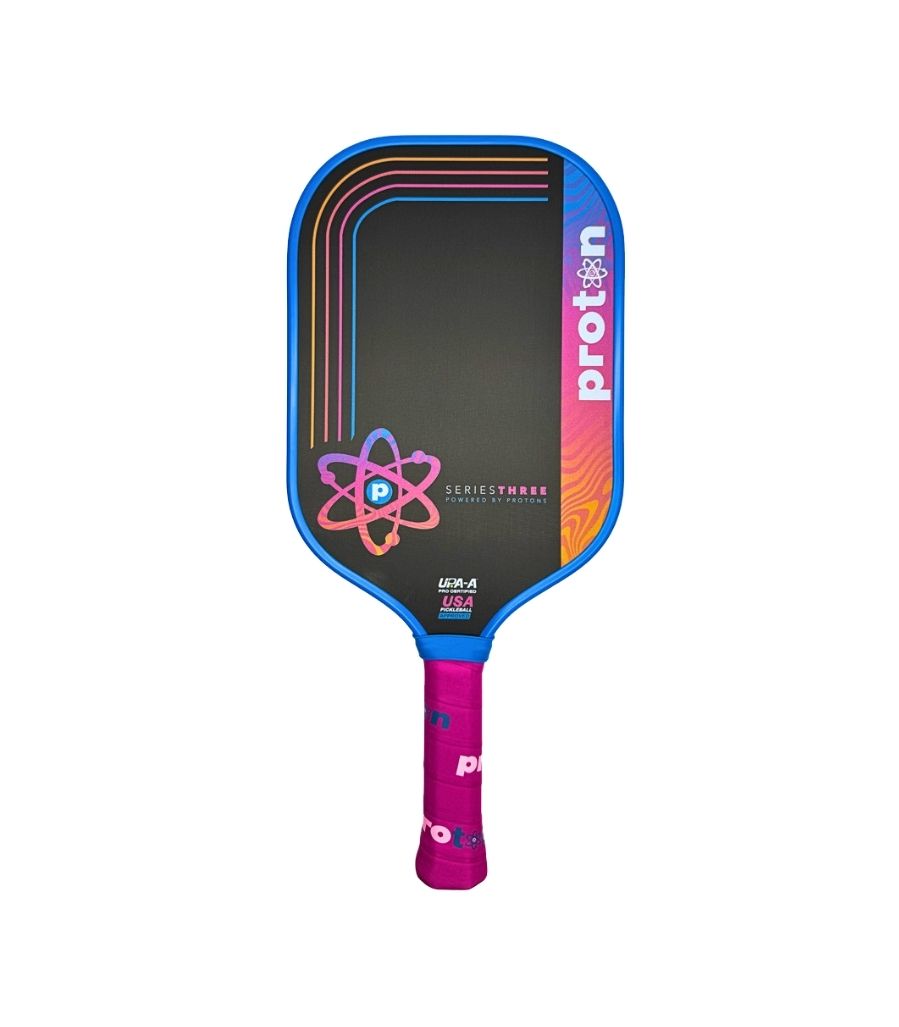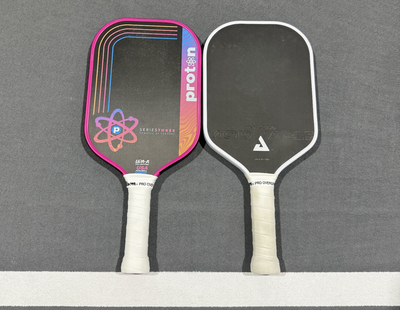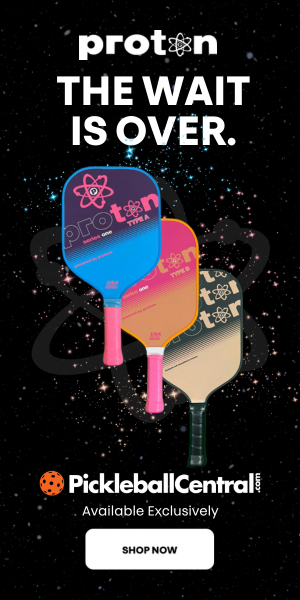Expert review: Proton Flamingo delivers top-tier performance for the modern game
Last Edited
Apr 09 2025
Category
Gear
Proton has been known for its innovative paddles since bursting onto the pickleball scene in 2024.
That innovation has led the company to introduce a total of four paddle lines in a relatively short period of time – the Series One, Series Two, Series Three and Series Four – which all use high-quality materials to create a unique feel and performance.
And in January Proton released its latest – and perhaps greatest – paddle to date: the Series Three - Project Flamingo.
The updated Series Three model features a more powerful core and a more textured hitting surface to deliver elite spin and power. It’s also the first paddle ever approved by both USA Pickleball and the United Pickleball Association of America, meaning it can be used at the professional and amateur level in PPA Tour events and in USA Pickleball sanctioned events.
The Flamingo was quickly adopted by several pros on the PPA Tour and the 15mm “Velocity Core” has earned this paddle a reputation as one of the most aggressive on the market.
The power and spin definitely stood out in my testing, which included several hours of drills from the baseline, in the transition zone and at the kitchen line. I’ve detailed my thoughts on how the paddle performs in each of those areas below.
Let’s cook!
Proton Series Three - Project Flamingo

Best suited for players who: Like to be aggressive with heavy topspin on serves and third-shot drives. If you are somebody who is already strong in those areas, this is a paddle that will fit your game well and take those shots from good to great. Its high spin potential also makes it easy to execute heavy topspin rolls on third-shot drops and dinks.
Key specs
Weight: 8 ounces
Swing weight: 119 (moderate)
Twist weight: 6.6 (moderate)
Handle length: 5.375 inches
Paddle length: 16.5 inches
Paddle width: 7.5 inches
Paddle face: Roughness-enhanced aerospace grade carbon fiber
Core material: Velocity core, polypropylene honeycomb
Core thickness: 15mm
A quick note before I dive into my thoughts: I was a bit nervous just looking at the specs that the handle was going to be too short. We’ve seen a clear shift toward longer handles in the past two years and it now seems that most players prefer a long handle because many are using two-handed backhands. But once I got it in my hand, there was no noticeable difference in the handle length between the Flamingo and other paddles that are advertised as having 5.5-inch handles, especially once I put an overgrip on. Below is the Flamingo next to a JOOLA Mod TA-15, which has a 5.5-inch handle. They are essentially the same shape.

From the baseline
Quick hits:
- Elite power and spin on serves and third-shot drives.
- Also great for hitting aggressive topspin drops.
- Consistent feel – I really had to shank one in order to notice a big difference in how the ball was coming off the paddle face.
The full story:
This paddle is a beast from the baseline, largely due to its spin potential. I was able to be as aggressive as I wanted on third-shot drives – in fact, the more aggressive I was, the better it performed.
This allowed me to give myself a comfortable margin over the net on drives and trust that the ball was going to have enough dip to stay in the court. That heavy topspin makes it very tough to deal with for the opposing player standing at the kitchen line, as drives can start out at their shoulder height and finish at their waist.
When combined with the paddle’s power, there’s very little time for the opponent to adjust to that movement, which is likely to result in more pop ups or misses into the net.
All of that spin is created by a high-grade carbon fiber surface paired with a high-quality resin, which gives the paddle face more structural integrity and means the surface roughness lasts longer, according to Brant Weiss, the vice president of pickleball at Proton. If you’re coming from almost any other carbon fiber paddle, you’ll definitely notice a difference in the surface roughness.
That’s also paired with high-density foam in the core, which adds “dwell time” for even more spin potential.
In transition
Quick hits
- Feels very sturdy and stable in this area.
- Easy adjustment period and consistent performance.
- Easy to take pace off of an opponent’s attack.
The full story:
A lot of s-adjectives come to mind when trying to describe how this paddle feels in the transition zone – sturdy, solid, stable … but not soft.
It felt very consistent from shot to shot, which is a credit to the paddle’s sweet spot. That consistent response made for a very easy adjustment period when hitting resets and digging out attacks from my opponent. Once I got a feel for how the ball was coming off the face, I felt very comfortable.
I also was able to take pace off of aggressive attacks fairly easily, which can be a struggle with most other power-oriented paddles.
Weiss says that’s due to the smaller cell size Proton used for the polypropylene honeycomb in the core. The bigger diameter cells used in other paddles can lead to a loss of control and more of a bouncy feel, making them harder to use in the transition zone.
At the kitchen line
Quick hits:
- Like with resets, the paddle’s consistent feel was helpful when dinking.
- Able to grip the ball well on aggressive topspin and slice dinks.
- Good pop on counters and attacks out of the air.
The full story:
I think this paddle will fit a lot of different game styles at the kitchen line. If you’re somebody who likes to hit a lot of rolling topspin dinks, it can do that (see above re: paddle grit and spin potential). If you’re somebody who likes to hit “push” dinks and wait for an opportunity to be aggressive out of the air or counterpunch, it’s good for that, too.
The paddle’s overall stability and big sweet spot also meant it was strong on counters and in hands battles – even if I didn’t catch one perfect, it still kept me in the rally. And when I did time one just right, it put me way ahead.
The overall power level on counters and overheads is at the top end of paddles that have been approved under new USAP and UPA-A regulations, Weiss says. That means most players will have no trouble putting away a high ball.
Closing thoughts
The main thing that stands out to me after playing with this paddle is the amount of spin I was able to generate, especially on third-shot drives. It seemed like there was almost no limit to how much I could go after those shots – there was always more under the hood.
With the modern game trending more toward an aggressive play style, I expect this to be a very popular paddle that will benefit a lot of players.
It’s also solid on resets and dinking, so you’re able to gain spin and power without really sacrificing in those other areas.





